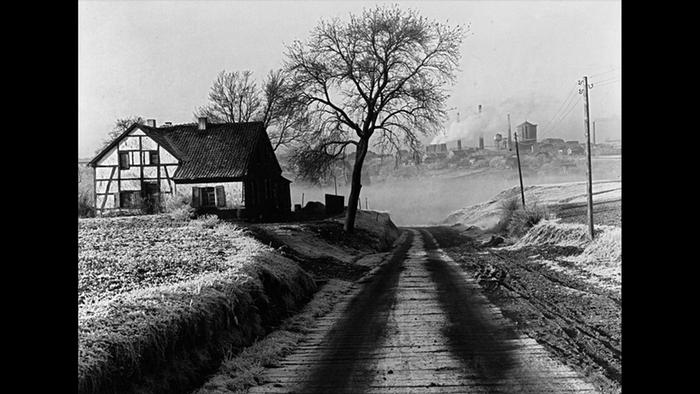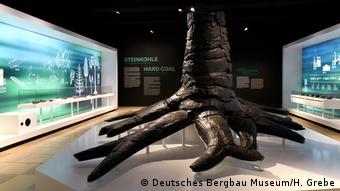When the Era of coal in Germany comes to an end, begins the work of the museums. Your task is, the world of carbon culturally and digital processing and to explore entirely new.

The largest ever mined Coal in the mixing plant of the coking plant at Zeche Zollverein in Essen. Miners of the coal mine Prosper-Haniel pulled him up with a special process from the deep, as a reminder to an Era of coal, which goes into Germany to the end. The seven-ton piece of Coal was part of the great exhibition to the age of coal in Europe in 2018.

The largest ever mined Coal from Prosper-Haniel
Many of the exhibits Hiking now in the depot of the Ruhr Museum in Essen and at the mining Museum in Bochum. Loans from other countries have to go back in the archives. “The Luxembourg national archives is already waiting eagerly to the fact that the Charter of the coal and steel Union returns,” says Heinrich Theodor Grütter, Director of the Ruhr Museum in Essen. A part of the exhibited sub-days machine remains on permanent loan to the Park in front of the mixing plant and the world is enriched therefore a cultural heritage site Zeche Zollverein. The large chunks of Coal, however, is to find a new home in the Ruhr coal AG (RAG).
Socially responsible removal and cultural projects
DieRAG was since 1968, responsible for the mining of coal, piece by piece in a socially responsible manner. With the closure of the last coal mine Prosper-Haniel in Bottrop, the tasks change from 2019. In the foreground is the so-called “Nachbergbau” and the structural change in the Ruhr Region. The RAG-Stiftung will continue to promote projects in education, science and culture, in connection with the German coal.
Watch the Video 02:57 live Now 02:57 Min. 
On the trail of the coal – What remains when the last mine closes?
The coal-mine Zollverein in Essen – in the 60s, the largest coal mine in the world – is already since 1986, is an industrial monument and, since 2001, the world heritage site. The landscape Park Duisburg around a former steel plant has been used since 1994 as a recreational and cultural site, with light events in the former factory buildings, spectacles and culture. The British newspaper “The Guardian” chose the Park as one of the ten most beautiful big-city havens in the world.
And if in mining the last layer is great, so there is still every year, the “extraschicht” – the night of industrial culture, is offered at 50 different locations in the Ruhr area, a diverse cultural program with Rock – and Pop concerts.
Machines from underground to the Museum
Underground self-closing is not a long time, even if the German end of the coal will be celebrated in these days of celebration. The machinery for the promotion of the coal must be mined, the tunnels are stabilized, and in eternal time, the harmful pit will be pumped out the water.
What light comes to machines and technical devices to days, moves to the part in the museums. This is a great task for the future for the mining Museum in Bochum, says Michael Farrenkopf. He is a Director of the mining historical documentation centre and also wants to bring to the colliery closure of young people in the coal mining industry closer. “As a documentation centre and Museum, we also have the great task to explain the new mining technique, because it is an international technique that consists in the 21st century. Century.”
The intangible cultural heritage in the Ruhr area

A Central piece of the new permanent exhibition in the Museum of mining: the mine water pump
The mining archive collects everything that makes the coal industry: technology, everyday objects, photos and a lot of paper. “We have the only construction of seven kilometers of Shelves full of files in the industrialization story, over the mountain, the people were employed there, and work processes,” says Michael Farrenkopf.
In the research project “people in the mining industry” researchers of the documentation centre collected the voices of witnesses and evaluated, because the mining-Museum Bochum is one of 8 Leibniz research museums. 80 people, men and women, members of the management Board and the worker or family members were to your work and life, surveyed the situation around the mining industry. Some of the video footage can be seen in the permanent exhibition at the Bergbau-Museum, Bochum. More are in the net, the “digital memory” of the Montan historical documentation centre, available.
Images of an industrial landscape
The people in the Ruhr area and the visitors to give Michael farrenkopf after the end of the coal before all things, why the Region has become so, as it looks today. To explain “why this is here as urban sprawl, that at the time, on the green Meadow Mines were built, and only then, the people were settled, and then the cities founded, the task of the Museum.”

Albert Renger-Patzsch: old landscape in front of a modern industrial backdrop in Essen Frohnhausen
Contributes to this aspect of the “Albert Renger-Patzsch”-exhibition of the Ruhr Museum in Essen. Renger-Patzsch, who lived from 1929 to 1944 in Essen, and is white with his black and photographs, as a photographer of the new objectivity. Until February its famous Ruhr-area landscapes are to be seen on Zeche Zollverein. “This is the most important Ruhr exhibition that we’ve ever shown. Since we have been sitting for decades, in order to realize the Pinakothek in Munich,” says Museum Director Heinrich Theodor Grütter. “The pictures show the old world of carbon, the amorphous industrial landscapes, living next to the mine.” In 2019 and 2020, will address the Ruhr Museum with the life of the people, with the pigeon breeders, with the Childhood or with the football in the “area”.
Big redesign in the Mining-Museum Bochum

Root stock of the Carboniferous age, in the new permanent exhibition of the mining Museum
The Bergbau-Museum Bochum was rebuilt at the end of the coal Era in Germany. In January, the first two will be opened in four new tours for the visitors. There is, of course, to the history of coal in Germany, but also to man and mining, and the consequences, such as the eternity of the tasks. The Central object is a deep-well pump, the water from the pit sumps pumps.
In planning the tours three and four are already. The third has a tour with the international geo-resources and natural resources. The fourth one shows the art and culture of the mining industry, with Work from renowned artists who have worked with coal, to the works of the workers underground, such as wood carvings, clay sculptures, or photos.
The great exhibition from the age of coal 2018 not disappear completely. Currently, hundreds of photos, which were made in the exhibition, put together, in order to allow the beginning of 2019 digital a 360-degree tour of the Show. With 70,000 visitors, the exhibition was one of the most successful on Zeche Zollverein.

Visitors in the Visual mining of the mining-Museum Bochum
And what remains of the typical for the Ruhr area mentality? The much-vaunted solidarity days? From the mining industry, know the people – regardless of origin – welded together? The historian Michael Farrenkopf remains sober. “This has changed of course over time, since more and more Collieries were closed.” The solidarity embossing no longer the General society. But one thing had remained from the mining, where often, in dangers of quick solutions were needed: “The people are unpretentious and direct. You have learned that it makes sense not to go to long distances, but on short distance, in direct contact solutions. Since the roots are in mining.”